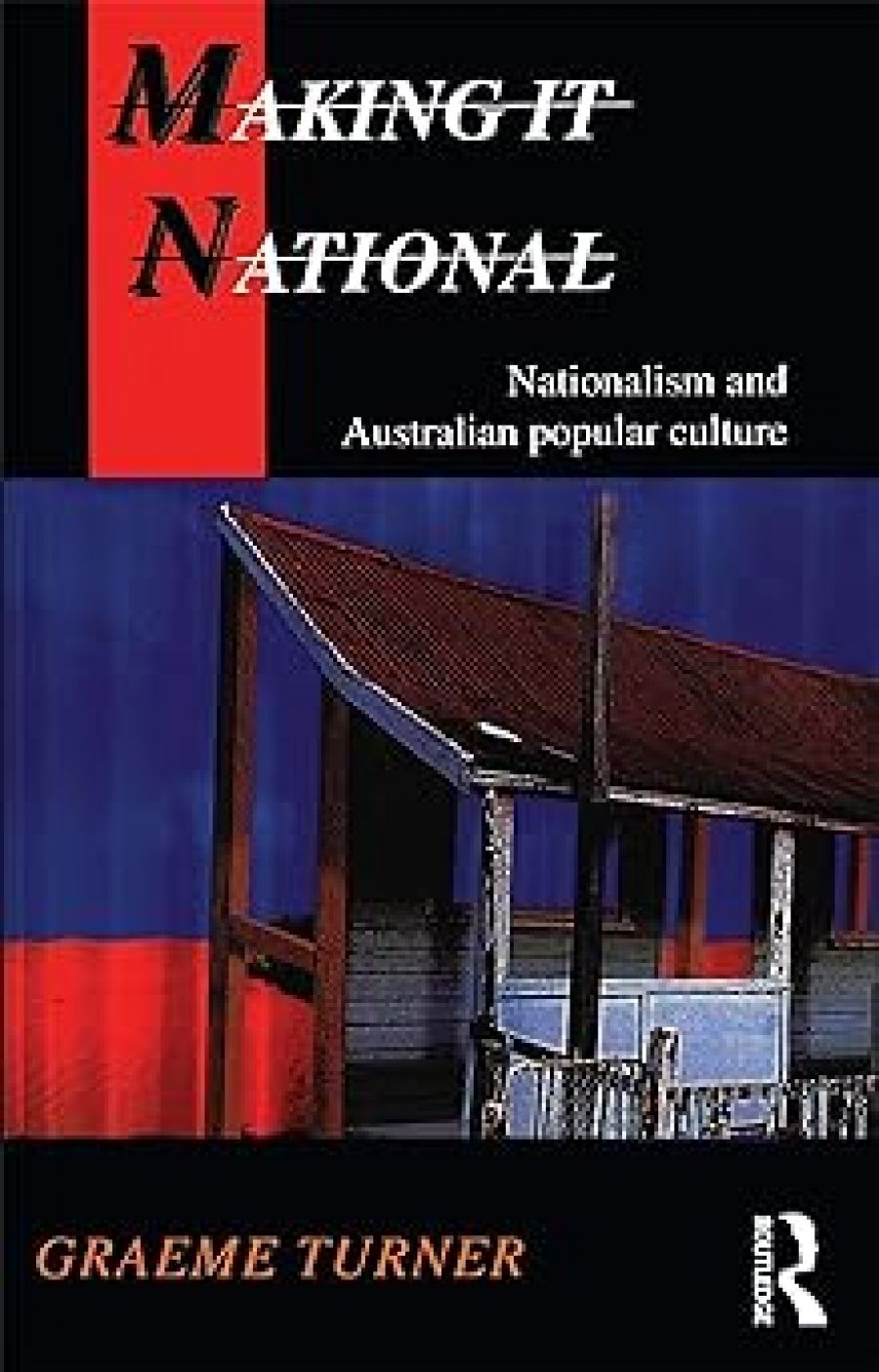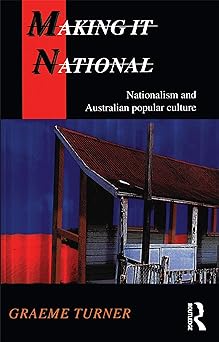
- Free Article: No
- Contents Category: Cultural Studies
- Review Article: Yes
- Article Title: A Kitbag of Popular Culture
- Online Only: No
- Custom Highlight Text:
It was during the writers’ week of the Adelaide Festival in 1992 that I first heard the so-called Australian sense of humour described as ‘Slavic’. This intrigued me at the time; now it troubles me. That week in March 1992 turned out to be the one during which sharp lines were finally drawn in Sarajevo and the attack on Bosanski Brod signalled the outbreak of war in Bosnia. Although it is difficult to weigh the significance of such events to take much notice, the least you can say is that it was a bad week for the whole idea of nationalism.
- Book 1 Title: Making it National
- Book 1 Subtitle: Nationalism and Australian Popular Culture
- Book 1 Biblio: Allen & Unwin, $19.95 pb, 189 pp
- Book 1 Cover Small (400 x 600):

Thankfully, the events in the Balkans have little or no likelihood of being replayed in Australia. Nevertheless, Graeme Turner has written an invigorating book which argues that nationalism in Australia is just as much capable of being corralled into the service of narrow sectional interests. Australian nationalism is highly biddable.
Turner’s opening case study is that of Alan Bond who, in the good old days, was seen by much of the media almost as a working model of ‘the national character’, his ‘Australianness discovered in his larrikinism, his egalitarianism and his humble social origins’. Never mind the fact that in 1988 ‘10 percent of the national external debt was due to the borrowings of this one man’. Bond is now as thoroughly disowned as his ‘Australia II’ once thoroughly embodied, in advertisement after advertisement, everything to which an Australian could aspire.
Equally disquieting for Turner is the manner in which Malcolm Turnbull, in fighting the Spycatcher trial against the British Government, and Jim McClelland, in putting pressure on the British Government to reveal details about nuclear tests in Australia, were both cast as champions of the national interest. At times, the ‘national interest’ was hard to distinguish from the tired pastime of ‘pommy bashing’ and, for that matter, the career paths of particular individuals.
The principal focus of Making it National is popular culture, for which Graeme Turner has a pretty fair appetite. His survey covers the period which spans almost ten years to the day from the America’s Cup victory in 1983 to the announcement in 1993 that Sydney was to host the Olympic Games. It touches on the work of Peter Carey, the success of the two Crocodile Dundee movies, the development of Movie World on the Gold Coast, the expansion of the local tourism industry, the rise of the band Yothu Yindi and the vast changes that have affected the way that news is gathered and is reported in the media.
Turner has no inherent problem with large scale public entertainment perse, nor does he dislike the idea of nationalism in itself. But, to paraphrase his argument, he urges the creation of an expanding sense of nationalism instead of one that is too tightly focused, one that ‘opens up possibilities rather than closes them down’. He is fond of Salman Rushdie’s description of the celebration of cultural impurity as a ‘love-song to our mongrel selves’.
This book offers any number of sharp insights. One of them is that, in the current political and economic makeup of the world, the distinction between the national and international is not as crucial as it once was in the forming of communal identity. More important is the distinction between the local and the global. At times, it is hard to know however where the differences are between ‘globalisation’ and ‘Americanisation’ or between ‘Americanisation’ and ‘modernisation’. Although the chapter that describes the origins and outcomes of the Crocodile Dundee phenomenon in campaigns to sell Australia as a tourist destination to Americans in search of some kind of fantasy of their own frontier is one of the most bracing, there is an insistence on treating ‘America’ as a single homogenised entity. It doesn’t allow America the complex self-under-standing Turner wants for Australia.
Turner does go in search of models for the shared celebration of heterogeneous identity. Oddly, he finds the seeds of one in the bicentennial celebrations in 1988, the midway point of the period he investigates. Perhaps he is right. That day did provoke the largest gathering of Aboriginal people in 200 years; it also left most people with a sense of how self-defeating it was to try and get the ‘celebration of a nation’ under a single banner. Making it National isn’t a bad book to keep in the kitbag to get through the round of bread and circuses that lie ahead of us in the next few years.


Comments powered by CComment